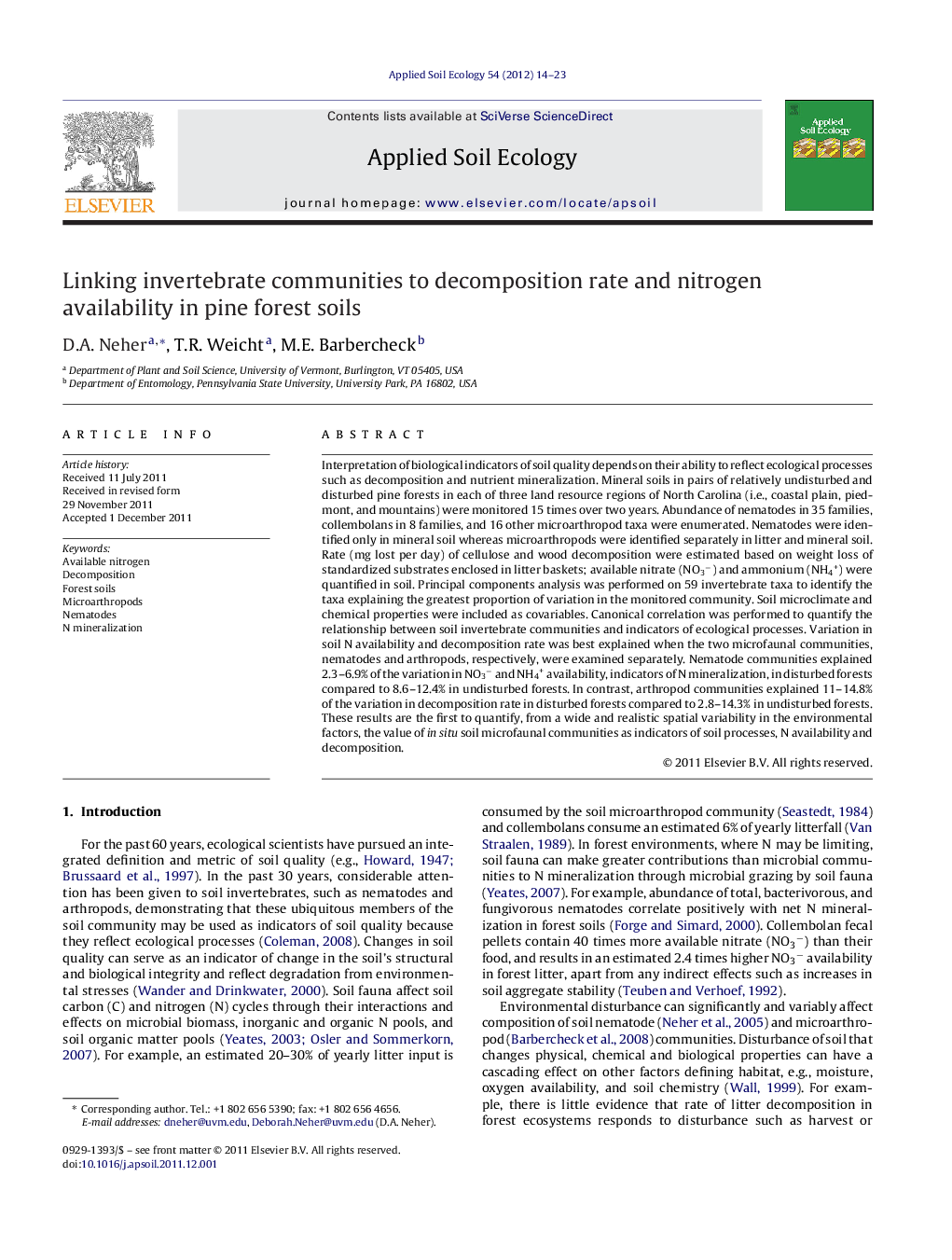| کد مقاله | کد نشریه | سال انتشار | مقاله انگلیسی | نسخه تمام متن |
|---|---|---|---|---|
| 4382601 | 1617829 | 2012 | 10 صفحه PDF | دانلود رایگان |

Interpretation of biological indicators of soil quality depends on their ability to reflect ecological processes such as decomposition and nutrient mineralization. Mineral soils in pairs of relatively undisturbed and disturbed pine forests in each of three land resource regions of North Carolina (i.e., coastal plain, piedmont, and mountains) were monitored 15 times over two years. Abundance of nematodes in 35 families, collembolans in 8 families, and 16 other microarthropod taxa were enumerated. Nematodes were identified only in mineral soil whereas microarthropods were identified separately in litter and mineral soil. Rate (mg lost per day) of cellulose and wood decomposition were estimated based on weight loss of standardized substrates enclosed in litter baskets; available nitrate (NO3−) and ammonium (NH4+) were quantified in soil. Principal components analysis was performed on 59 invertebrate taxa to identify the taxa explaining the greatest proportion of variation in the monitored community. Soil microclimate and chemical properties were included as covariables. Canonical correlation was performed to quantify the relationship between soil invertebrate communities and indicators of ecological processes. Variation in soil N availability and decomposition rate was best explained when the two microfaunal communities, nematodes and arthropods, respectively, were examined separately. Nematode communities explained 2.3–6.9% of the variation in NO3− and NH4+ availability, indicators of N mineralization, in disturbed forests compared to 8.6–12.4% in undisturbed forests. In contrast, arthropod communities explained 11–14.8% of the variation in decomposition rate in disturbed forests compared to 2.8–14.3% in undisturbed forests. These results are the first to quantify, from a wide and realistic spatial variability in the environmental factors, the value of in situ soil microfaunal communities as indicators of soil processes, N availability and decomposition.
► Invertebrates and nutrient cycle indicators were monitored in paired pine forests.
► Separate examination of nematodes and arthropods best explained decomposition and soil N.
► Nematodes best explained variation in soil N concentration.
► Arthropods best explained variation in decomposition rate.
► Soil microfaunal communities are indicators of soil processes in pine forests.
Journal: Applied Soil Ecology - Volume 54, March 2012, Pages 14–23